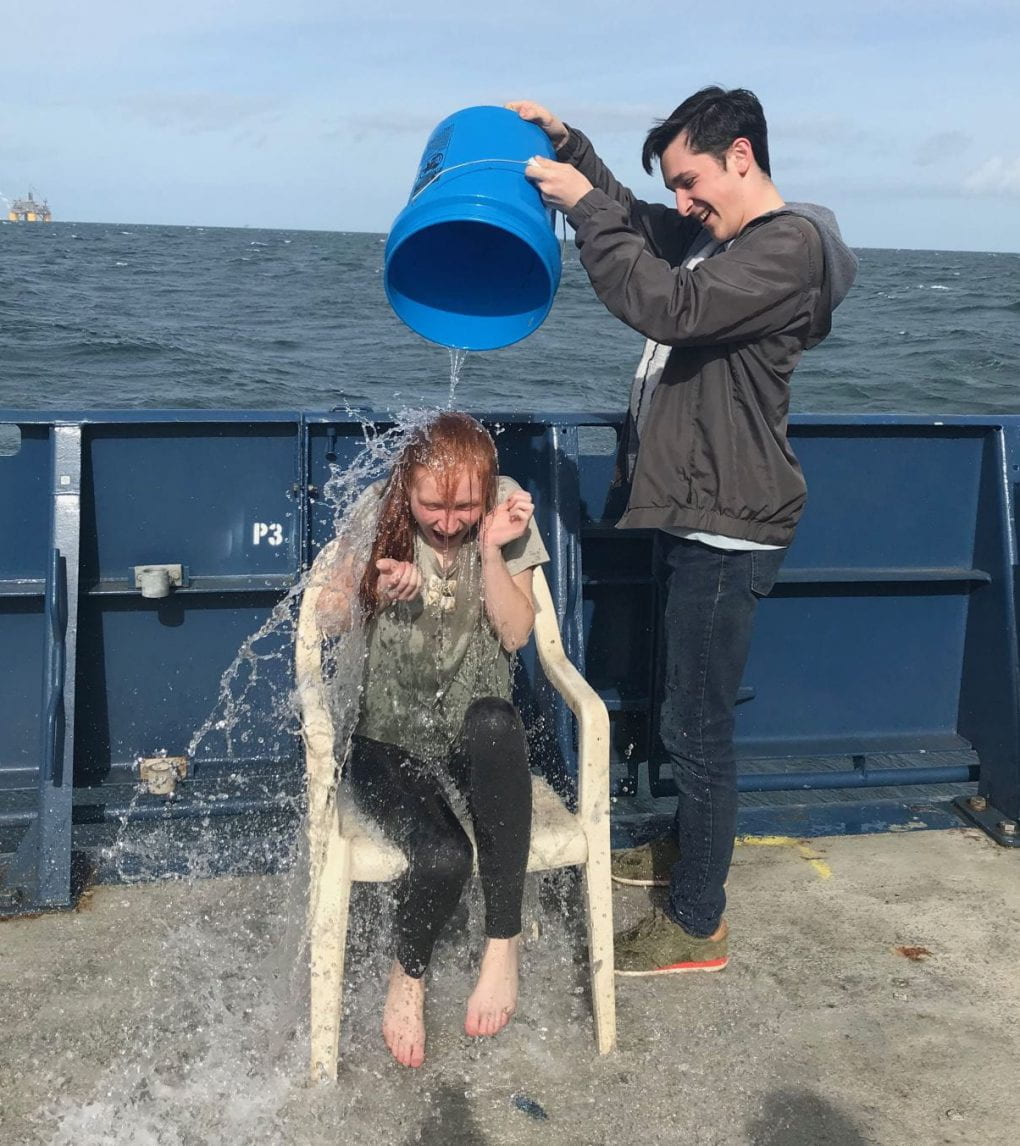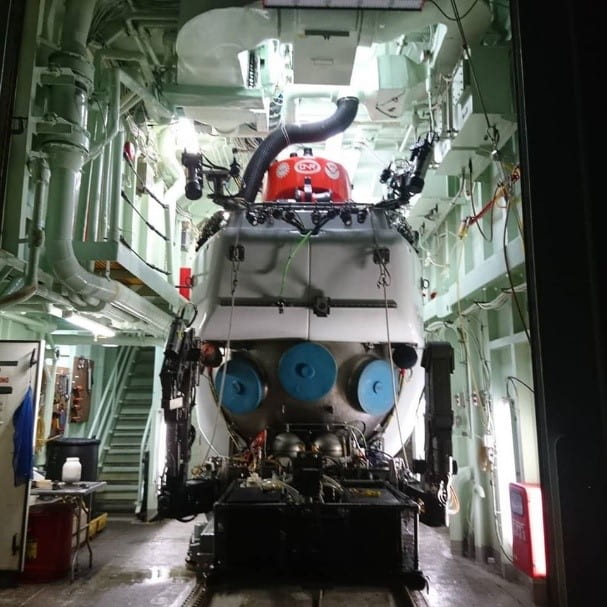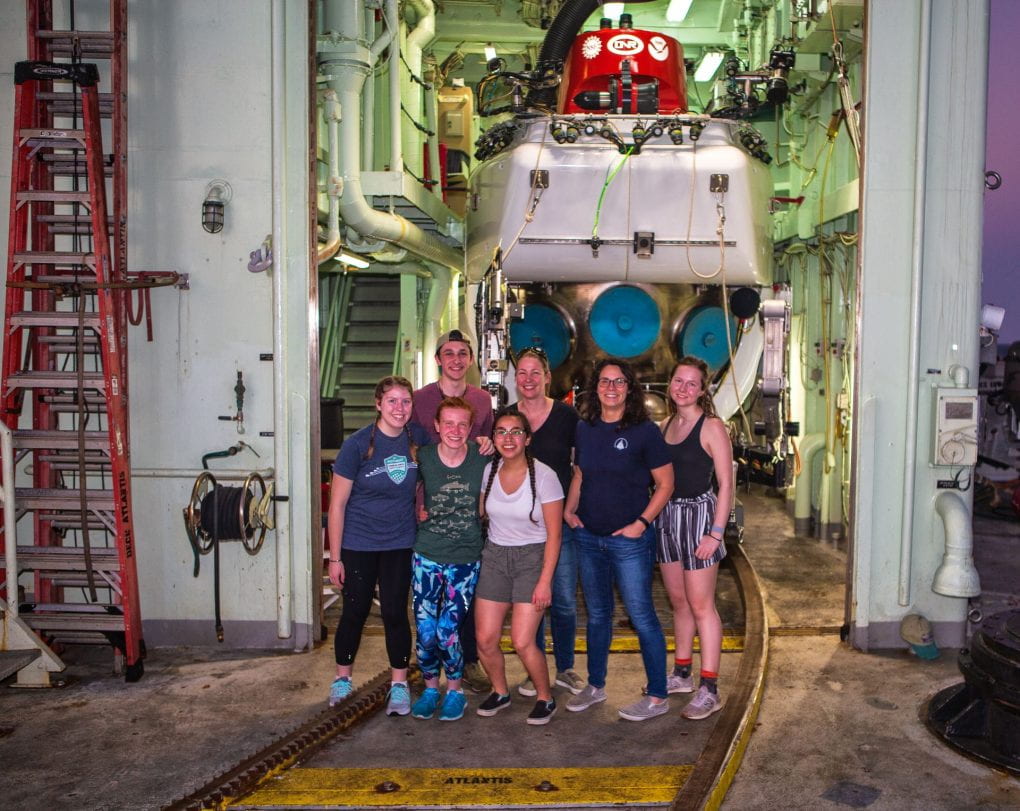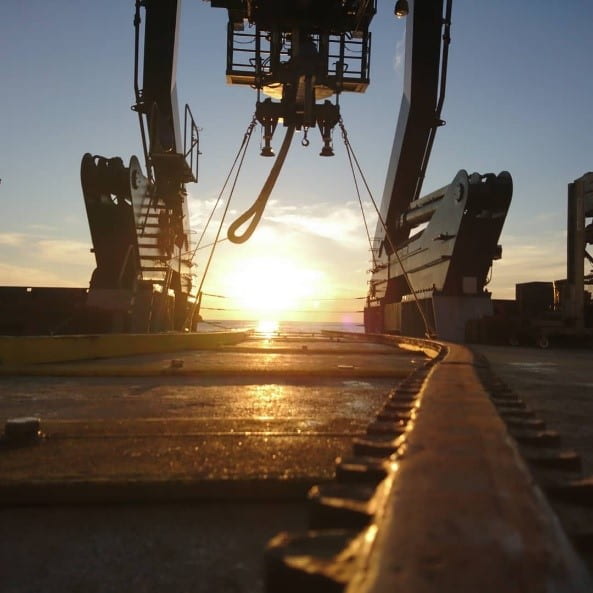
Announcement
The Larval Lab is currently seeking 1 WWU undergraduate to join us for a full-time, paid, 10-week Research Experience of Undergraduates (REU) during Fall 2021. Join us at sea as we explore life at cold seep environments in the Gulf of Mexico and Western Atlantic Margin. Gain valuable experience both in the lab and at sea while investigating community structure, connectivity, species interactions and more in this extreme environment. Whether you are early into your college career and exploring career paths or are a senior looking to go out with a bang, this is a great opportunity to pick up hands-on sea-board experience with many more perks attached! Early career undergraduate students are encouraged to apply!
Half-time REU Option:
Students may also apply for a half-time two-quarter REU (Summer/Fall 2021 or Fall 2021/Winter 2022) where students may take up to 6 credits of regular courses and work 20 hours/week on the REU. Students are still expected to take the summer Science Communication in Visual Media course (course tuition covered) or equivalent.
Project Summary
Ever since hydrothermal vents and methane seeps were first discovered in the deep ocean more than 40 years ago, scientists have wondered how these isolated communities, fully dependent on underwater “islands” of toxic chemicals, are first colonized by organisms, and how the populations of these specialized animals are exchanged and maintained. These fundamental processes depend on the transport of babies (larvae) by the ocean currents, yet because the larvae are microscopic and diluted in the vastness of the ocean, it is very difficult to determine where and how they drift. This project uses an autonomous underwater vehicle to collect larvae from precise regions of the water column. Larval traps on the bottom and chemical analyses of larval shells will also be used to determine the depths where larvae swim. These findings will provide realistic estimates for mathematical models that show how biology interacts with ocean currents to predict which methane seeps will be colonized by larvae originating at different depths. A detailed knowledge of larval dispersal is needed for conservation and management of the deep sea. Without such information, we cannot know the best placement of marine protected areas, nor can we facilitate the reestablishment of communities impacted by deep-sea mining, drilling, or other human activities. This project will provide hands-on at-sea training for college students to learn the rapidly vanishing skills needed for studies of larvae and embryos in their natural habitats. Learning opportunities will also be available to individuals of all ages through new, interactive exhibits on deep-sea biology and larval ecology produced for small museums and aquaria on the coasts of Oregon, Washington and North Carolina.
Reliable estimates of connectivity among metapopulations are increasingly important in marine conservation biology, ecology and phylogeography, yet biological parameters for biophysical models in the deep sea remain largely unavailable. The movements of deep-sea vent and seep larvae among islands of habitat suitable for chemosynthesis have been inferred from current patterns using numerical modeling, but virtually all such models have used untested assumptions about biological parameters that should have large impacts on the predictions. This project seeks to fill in the missing biological parameters while developing better models for predicting the dispersal patterns of methane seep animals living in the Gulf of Mexico and on the Western Atlantic Margin. Despite the existence of similar seeps at similar depths on two sides of the Florida peninsula, the Western Atlantic seeps support only a subset of the species found in the Gulf of Mexico. It is hypothesized that the ability of larvae to disperse through the relatively shallow waters of the Florida Straits depends on an interaction between the adult spawning depth and the dispersal depth of the larvae. Dispersal depth, in turn, will be influenced by larval flotation rates, swimming behaviors, feeding requirements, and ontogenetic migration patterns during the planktonic period. The recently developed SyPRID sampler deployed on AUV Sentry will be used to collect larvae from precise depth strata in the water column, including layers very near the ocean floor. Larval traps deployed on the bottom at three depths in each region will be used in conjunction with the plankton collections to determine what proportion of larvae are demersal. Comparisons of stable oxygen isotopes between larval and juvenile mollusk shells will provide information on the temperatures (and therefore depths) that larvae develop, and geochemical analyses of larval and juvenile shells will determine whether larval cohorts mix among depth strata. Ocean circulation and particle transport modeling incorporating realistic biological parameters will be used to predict the movements of larvae around the Florida Peninsula for various spawning depths and seasons.
Location
Summer 2021 students will be housed at SPMC while taking the remote summer course, Science Communications using Visual Media. Travel to and from port, housing and meals during the cruise will be provided. Any additional travel, meals (such as during stay at SPMC) and frills will be at the student’s expense.
Student Expectations
In collaboration with Dr. Arellano, the REU intern will develop an individual research project related to the goals of the described research topic. They can proceed with their normal academic programs while participating in the internship and the rest of the project. This internship is designed in coordination with WWU’s research participation courses (see below) to integrate undergraduates in every aspect of research, from proposal development to communication of results. Besides participation in the cruise and conducting the independent research project, we will encourage student interns to enroll for credit through their majors in Environmental Science or Biology (e.g., ESCI 498A Senior Thesis, ESCI 498B Internship, and/or ESCI 498C Senior Project; OR Biol 395 Biology Research Participation, Biol 494 Biology Research, Biol 495 Research Communication).
Enrollment in one of the above ESCI or Biology research courses will be encouraged in the quarter prior to the cruise activities. During this time REU interns will work one-on-one with Arellano as they develop a short research proposal for work they would like to carry out shipboard during the cruise. Students may also enroll in research credits to complete processing of data from the cruise, depending on their research and academic needs.
The student will conduct this research during the quarter in which the research cruise coincides and may carry out the research project shipboard or back in the lab after the cruise. Besides working on research, the intern will be assigned a role on the cruise, such as sample logging or dive video editing. Student will be encouraged to enroll in a shipboard Deep-sea Ecology Course, co-taught by Dr. Arellano and will include lectures from the scientist participating in the cruise in their areas of specialization, introduction to ship navigation skills, and introduction to the deep-sea assets by the crews of the ROV Alvin.
Students will enroll in a new Summer course, Communicating Science through Visual Media (Comm 297) or equivalent. Tuition for this course will be covered by the REU. With the tools picked up in this course, students will be expected to create a film about the project that will be incorporated into a touchscreen museum display at WWU’s SEA Discovery Center, as well as University of Oregon Charleston Marine Life Center, and NC State’s Science House.
Students will gain valuable scientific skills working on this project, including molecular and quantitative skills. Besides required presentations at the conference, students will be encouraged to present their research on campus to further enhance their communication skills (for example, during WWU’s Scholars Week).
Additional funds are available to provide undergrads the opportunity to present their independent research at a national conference. This benefits the students in both engaging and networking with the scientific community as well as experience presenting scientific research to the public.
Eligibility
Open to WWU Biology, ESCI, MACS, or other related science majors undergrad students.
Preference for students that have at least one year remaining as an undergrad at WWU. First and second year students are encouraged to apply.
Students supported with NSF funds must be citizens or permanent residents of the United States.
The Arellano lab is committed to supporting students with diverse backgrounds, experiences, and needs.
How to Apply

Application package includes CV, unofficial transcripts and statements.
Statements should be 2 pages, 12-point font, 1.0-spaced. Statement should reflect the following points:
- Statement of Interest: describe the areas of marine science that most interest you and your personal goals for the internship and beyond. (1 page max, 12pt font, single spaced)
- What qualities and characteristics will you bring to the program because of your work/activities/other life experiences? (1/2-page max, 12pt font, single spaced)
- Write about an experience of overcoming adversity or an obstacle in your life. (1/2-page max, 12pt font, single spaced)
Application packages should be submitted via email to Shawn Arellano: arellas@wwu.edu
Important Dates
Application due date May 31, 2021
Awardees notified June 7, 2021
Summer Course: June 22, 2021- July 30, 2021
REU term: Fall 2021 or half time option
Cruise dates: approximately November 2- 21, 2021
For more information about the project click here and here.
Additional questions? Contact Shawn Arellano: arellas@wwu.edu
Funding provided by: NSF Award # 1851286
Photo props: Pat Lyon, Michelle McCartha and Crew and students from SALT cruise Spring 2020





